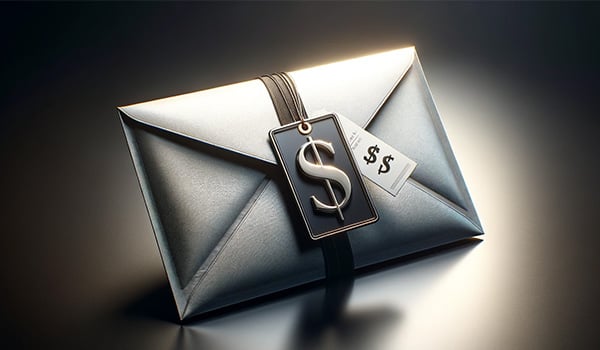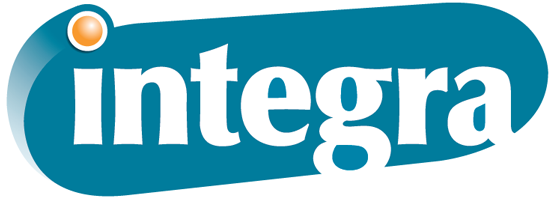How Much Will Envelopes Add to My Direct Mail Costs?
March 10th, 2024 | 5 min read

If you’ve decided to put your next round of mailers in envelopes, or you’re weighing the pros and cons of doing so, you might be wondering just how much extra you’ll pay for the addition. Envelopes add material and labor costs to any direct mail campaign, but how much?
We’ve worked on thousands of direct mail campaigns and helped clients choose their envelopes in many of those projects. We’ve found along the way that the answer on pricing fluctuates dramatically. It’ll depend on a variety of factors and choices you’ll get to make as you design your campaign.
That may sound like a non-answer, but we promise that our goal here is to break down envelope costs based on all the factors you’ll want to consider before making your selections. You may not have an exact number down to the cent by the time you’ve finished reading, but you’ll have a solid estimate of how much you need to budget and which factors you may want to add or cut from your mailing to affect your bottom line.
So let’s get started!
Envelope Features That Most Significantly Affect Direct Mail Pricing
Before you start pricing out envelope features, you may want to check out our blog post on direct mail situations that call for envelope use. Sometimes, cutting them out altogether is the smart move since you can show your content on the outside of a postcard or self-mailer.
But maybe you work in an industry with tight privacy and security guidelines, or perhaps you just stylistically prefer envelopes and want to know how much you’ll need to pay for yours. Here are the most critical envelope pricing factors.
1. Envelope Printing Method: Digital vs. Offset
The choice between digital and offset printing methods significantly impacts cost, especially as your order size crosses certain thresholds.
For smaller quantities, digital printing remains cost-effective, offering a flat rate regardless of color usage. However, as quantities increase, offset printing becomes more economical, particularly for orders exceeding 2,500 units.
The transition from digital to offset can halve the cost for larger quantities, making it a critical consideration for budgeting.
2. Envelope Quantity
The quantity of envelopes you order has a direct impact on your pricing. As with most print materials, buying in bulk can significantly reduce your unit price, though it'll increase your overall costs.
3. Envelope Size
The size of your envelope also influences the cost. Standard sizes like the #10 envelope are typically more cost-effective due to their commonality and bulk production. Many companies already have fully converted #10 envelopes in their inventory, meaning low setup and shipping costs.
You may choose to go larger as one of the many ways to help your mail piece stand out and boost your envelope open rate. As you move to larger sizes, such as #11 or #12, you’ll find that prices increase. This change is partly because these sizes are less standard and may not be purchased in large quantities by printers, leading to higher costs.
4. Windows on Envelopes
Adding a window to your envelope incurs a minor upcharge. For example, for 500 #10 envelopes, adding a standard window might increase the cost by around $10. This upcharge is relatively minor compared to the overall cost, and the windows may be a valuable addition depending on your direct mail campaign's needs.
Customizing the window size or position on your envelope can lead to a price increase, costing approximately 30% more than standard windows. This customization requires specific setups and potentially affects the conversion process, impacting your overall cost.
5. Print on the Front Side of Envelopes
The cost of printing on the front of your envelope can vary based on the printing method and required coverage.
For digital prints, whether you opt for a small logo or full coverage, the price will remain consistent up to a certain quantity. However, for offset printing, especially for runs larger than 10,000 units, the amount of ink coverage (light, medium or heavy) can affect your pricing, potentially increasing it by 10–15% for heavy coverage.
6. Print on the Full Envelope (Front and Back)
Printing across the full envelope, especially for custom designs that require printing on flat sheets before conversion, can significantly increase your final costs.
This method is more expensive because it requires a specialized handling and conversion process. Rather than pulling from an inventory of already converted envelopes, your printers will need to start with flat sheets and then convert them into envelopes after printing your design or color onto them.
For example, a custom red envelope for a nonprofit campaign for 5,000 standard-size envelopes could cost an additional $2,500 compared to standard printing on pre-converted envelopes.
7. Bleeds on the Exterior of Your Envelope
The extent of ink coverage and the presence of bleeds — where the design extends to the edge of the envelope — can affect the cost of your envelopes, particularly for offset printing.
Heavy ink coverage and full-bleed designs require more resources as well as a careful setup to ensure consistent quality, leading to higher prices. These factors are less impactful in digital printing but become crucial cost determinants in larger offset print runs.
8. Security Tint Inside Your Envelopes
Adding a security tint inside your envelopes is one of several ways you can protect the privacy of your direct mail recipients. Doing so, however, incurs an additional cost.
You may choose a standard security tint that’s already in stock with your supplier. In this case, you can expect roughly a 10% increase in your overall cost. For 500 #10 envelopes, this could mean an extra $20 on top of the base price.
Custom tints or designs inside your envelopes will much more significantly increase your costs — anywhere from 30% to 50%, depending on the complexity and quantity involved in your project.
9. Color Usage in Your Envelope Design
The number of colors used in your envelope design can also affect the price you see, especially when quantity has necessitated a shift from digital to offset printing. While digital printing maintains consistent pricing for any color range, offset printing costs vary.
A single-color design is the most economical in offset printing, and costs increase with each additional color. This variance becomes even more relevant in large-scale orders as well as those where specific color fidelity, such as Pantone Matching System (PMS), is required.
10. Material and Conversion Costs
As you've likely come to find out, the type of material used for your envelopes and the conversion process — turning flat sheets into envelopes — can heavily influence your final cost.
High-quality materials and specialized conversion processes, such as those required for full-coverage designs and custom interior prints, command higher prices. The complexity of these processes, especially for unique or intricate designs, necessitates additional labor and machinery setup, which will reflect in your campaign's bottom line.
Build a Budget That Includes Envelopes in Your Direct Mail Marketing
You may not have known just how many factors can increase or decrease the cost of envelopes when you first landed on this blog. Or perhaps you saw a wide range of prices and weren’t sure where those differences came from.
In either case, you should now have a much clearer idea of what choices will and will not change the bottom line in your direct mail campaign. You deserve to plan and budget for your projects without any hidden fees or surprise charges. Knowing the factors that matter to your company’s marketing overhead will allow you to plan accordingly and dodge those unpleasant surprises.
If you're considering working with a print broker who can help you plan for and manage the costs associated with your next direct mail marketing campaign, you might be wondering what it's like to print and mail with Integra. Read our article on the topic for help deciding whether we're the right fit.
Or, if you're eager to get started right away, click below to speak with a print and mail expert who will put your mailing success above all else.
Topics:


